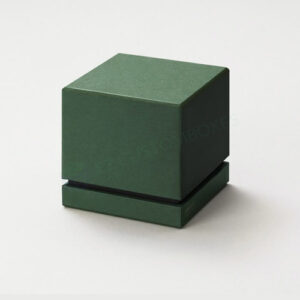
When it comes to designing small bedrooms, the challenge lies in maximizing every inch of space without sacrificing style or functionality. Small spaces can often feel cramped, but with the right architectural strategies, a compact bedroom can become a cozy, stylish, and well-organized sanctuary. From innovative design ideas to clever furniture choices, here are some architectural hacks to make a small bedroom have a big impact. Architects in Chennai can help guide you in making the most of your space, ensuring that every design element contributes to both aesthetics and practicality.
1. Embrace Minimalist Design
The first rule when designing a small bedroom is to keep things simple. Minimalist design focuses on clean lines, neutral colors, and functional furniture. By reducing visual clutter, a minimalist approach can make a small room feel much larger and more open.
- Furniture Selection: Choose sleek, simple pieces that serve multiple functions. Opt for a bed with built-in storage or a minimalist desk that doubles as a vanity. Avoid oversized furniture that will overwhelm the space.
- Color Palette: Light, neutral colors like whites, soft grays, or beige can make a room feel airier. These colors reflect natural light, which makes the space appear more expansive. Avoid using dark or bold colors in excess, as they can make a small room feel enclosed.
- Open Space: Try to keep the center of the room free of furniture. This will create a sense of openness and give the room a more spacious feel.
2. Maximize Vertical Space
When floor space is limited, look to the walls. Vertical storage solutions and design elements can help you maximize space in a small bedroom while keeping it functional and stylish.
- Built-In Shelves: Wall-mounted shelves or built-in shelving units can provide ample storage for books, decor, or personal items without taking up valuable floor space.
- Tall Furniture: Opt for tall wardrobes or cabinets instead of wide ones to store clothing and other essentials. This utilizes vertical space, freeing up the floor area for movement.
- Hanging Storage: Utilize hooks, wall-mounted racks, or hanging baskets to store accessories or clothing. This helps to keep surfaces clear and adds a functional, decorative element to the room.
3. Use Multi-Functional Furniture
In a small bedroom, every piece of furniture should pull double duty. Choosing pieces that can serve more than one function will save you space and improve the room’s overall efficiency.
- Storage Beds: Opt for a bed with built-in drawers or a lofted bed that allows space underneath for a desk or seating. A Murphy bed or foldable bed can also be a great solution for transforming a bedroom into a multifunctional space.
- Fold-Out Furniture: Consider foldable furniture like wall-mounted desks or wall beds, which can be tucked away when not in use, freeing up space for other activities.
- Ottomans and Benches: Choose a storage ottoman or a bench that can act as both seating and storage for extra bedding or clothes.
4. Incorporate Mirrors to Enhance Light
Mirrors are one of the most effective tools for making a small bedroom feel larger and more open. Not only do mirrors reflect light, creating the illusion of space, but they can also serve as a focal point in your room’s design.
- Strategic Placement: Place a large mirror on one wall to reflect light and give the room a sense of depth. A mirrored wardrobe or furniture can also help to open up the space and create a light, airy atmosphere.
- Reflect Natural Light: Position mirrors across from windows to reflect natural light into the room. This will enhance brightness and make the room feel more expansive.
5. Use Light, Airy Curtains or Blinds
Heavy curtains can weigh down a small room and make it feel even more cramped. For a fresh and open feel, opt for lightweight, sheer curtains or blinds that allow natural light to flow through.
- Sheer Curtains: Choose light-colored sheer curtains that allow sunlight to enter without sacrificing privacy. These can soften the overall feel of the room while maintaining an airy atmosphere.
- Vertical Blinds or Shades: Vertical blinds or shades can help draw the eyes upward, which adds a sense of height and space to the room. They’re also functional, allowing you to adjust the amount of light entering the room.
6. Opt for Light Flooring Materials
The type of flooring you choose can have a big impact on how spacious a room feels. Dark or heavy flooring can make a small room feel even more enclosed, while light flooring materials help to open up the space.
- Light Wood or Laminate: A light wood floor or laminate can brighten a room and visually expand the space. It also adds warmth and texture to the room.
- Neutral Rugs: Use rugs in neutral or light tones to define different areas within the room without making the space feel divided. Make sure the rug complements the color scheme and doesn’t overpower the room’s design.
- Continuous Flooring: If possible, use the same flooring material throughout the room and into adjoining spaces to create the illusion of a larger, more connected area.
7. Create a Focal Point with Accent Walls
An accent wall can draw attention away from the size of the room and create visual interest. Whether it’s a pop of color, wallpaper, or unique textures, an accent wall adds character and helps to define the room’s personality.
- Bold Colors: If you want to add personality without overwhelming the space, choose a bold color for one wall. Deep blues, soft greens, or even gold accents can create a striking focal point.
- Wall Treatments: Wallpaper, reclaimed wood panels, or textured paint can add depth to a small room. These elements can make the room feel more dynamic without overwhelming the space.
8. Maximize Natural Light
Natural light is essential in making a small room feel bright and airy. If your bedroom has windows, make the most of them by avoiding heavy window treatments and choosing designs that let in more light.
- Avoid Blocking Windows: Ensure that your furniture placement doesn’t block the windows. Keeping your window areas clear allows natural light to flow in and illuminate the room.
- Use Translucent or Glass Elements: If privacy isn’t an issue, consider using frosted glass panels or translucent partitions to allow light to pass through different areas of the room without creating visual barriers.
9. Smart Color Choices
Color can have a significant impact on the perceived size of a room. Opt for soft, light shades that can help open up the space.
- Pastels and Light Tones: Light shades like pastels or muted neutrals reflect light, making the room feel larger. Soft pinks, light blues, and off-whites are all good choices.
- Monochromatic Scheme: Using variations of the same color (like soft blues or beige tones) can make the room feel cohesive and open. It creates a sense of flow without overwhelming the space.
10. Keep it Organized
In a small bedroom, clutter can quickly make the room feel suffocating. Stay organized by using smart storage solutions, such as under-bed storage, hidden cabinets, or baskets.
- Declutter Regularly: Keep only the essentials in your bedroom, and periodically declutter to prevent things from piling up. A clean, organized space feels more spacious and calming.
- Storage Furniture: Invest in furniture with hidden storage options, such as an ottoman that doubles as a seat or a bed with drawers underneath. This will help keep the room tidy while maximizing available space.
Conclusion
Designing a small bedroom doesn’t mean sacrificing style, comfort, or function. By applying these architectural hacks, you can create a space that feels larger, more organized, and visually appealing. From maximizing vertical space to incorporating multifunctional furniture, every design decision plays a role in transforming a compact bedroom into a welcoming retreat. With the right approach, even the smallest bedroom can make a big impact.





